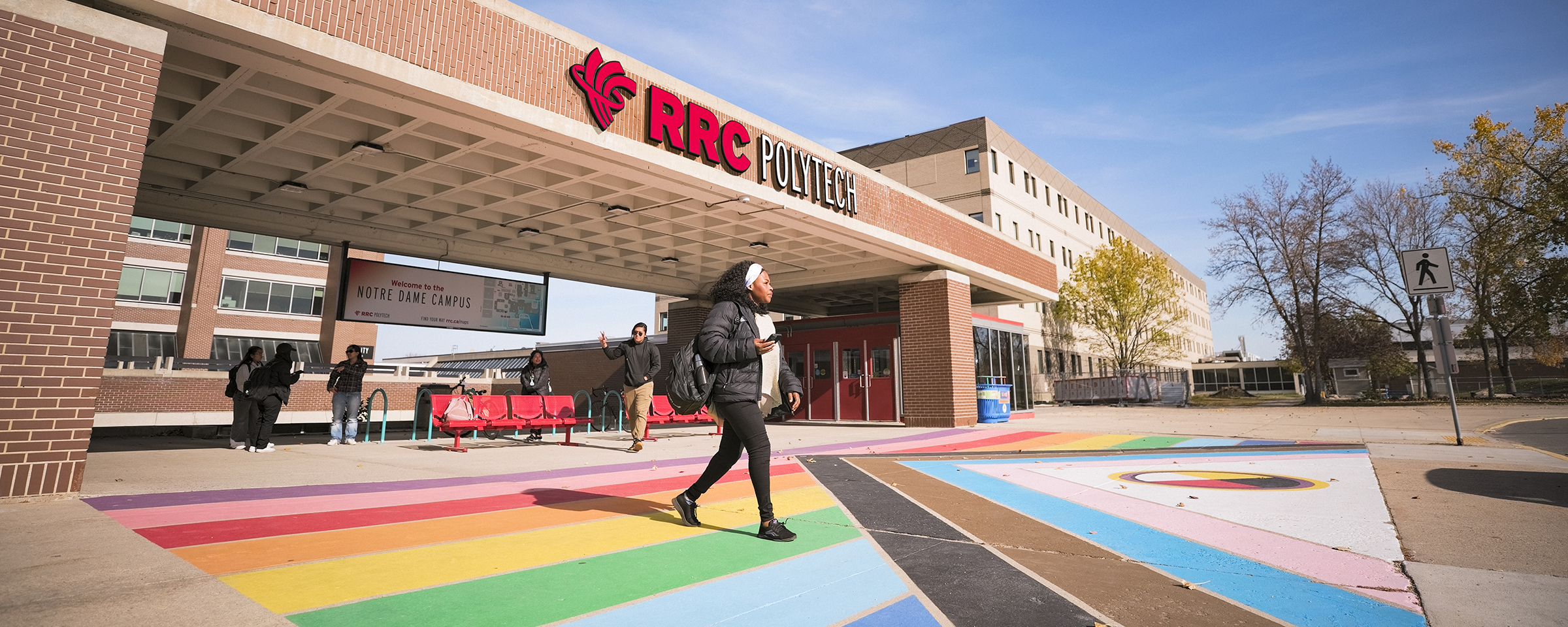RRC Curriculum Development Helps Northern Residents Address Housing Shortage
A partnership between Red River College and the provincial arm of the Frontiers Foundation is helping residents of Northern Manitoba communities address a critical housing shortage in the region.
Through a recent enhancement and expansion of Frontier Foundation's Standing Tree to Standing Home program, First Nation residents in Manitoba are being provided with the skills and equipment required to fell trees, set up sawmills in their communities, and eventually construct their own houses.
The project was borne out of an observed need for improved housing on provincial reserves, and was developed through a partnership between Frontiers Foundation Manitoba (the local arm of an Ontario-based charitable organization that builds homes in Aboriginal communities), Red River College's Gimli Campus and the Canada Mortgage and Housing Corporation.
The College, for its part, was tasked with converting Frontiers Foundation's undocumented curriculum into five modules — including course outlines, skill checklists and tests — designed to help Northern residents get their own building program underway, using resources found in their own backyards.
Developed by Rosemary Vogt, an Instructional Designer with RRC’s Teaching Learning Technology Centre (TLTC), the curriculum’s modules include Forestry Practices, Milling Lumber, Foundations and Footings, Wall and Roof Construction, and Finishing.
“The five modules take participants all the way from felling trees to dragging logs to the sawmill to making lumber, building a house, and then finishing it,” says Vogt, who is currently working on a $2.1-million E-Apprenticeship Design & Delivery (EADDI) Project, using knowledge gained from the development of the Standing Tree initiative.
“What I did with each module is develop a skills checklist, so as they go through the program, they have to get their supervisor to confirm they know how to do these things safely. After completing a level or two, they can take that piece of paper to an employer in the community — kind of like a portfolio piece proving they have the skills required to gain employment.”
Already, the Frontiers Foundation has helped train three instructors (from Opaskwayak, Garden Hill, and Mosakahiken First Nations), who will train fellow residents to become journey-person carpenters.
Their instructor, Brian Monkman — a Metis carpenter and Frontiers Foundation Regional Coordinator who was instrumental in launching the program — continues to supervise the pilot initiative at Garden Hill, where he’s training a 30-person crew to log and mill timber, and build houses.
In communities like Garden Hill — where residents invested in a sawmill as part of the Standing Trees pilot program — a single bungalow built using local materials can cost half as much as a house built using materials that have to be trucked north by winter road.
Throughout the province, it’s predicted programs based on the Standing Tree to Standing Home model could have a significant impact on housing backlogs, while also reducing unemployment rates among residents.
The program was the subject of a recent documentary on the Aboriginal Peoples Television Network, and is currently being adopted by groups in Ontario and Quebec.
For more information about the project, see www.frontiersmb.ca/training.html
